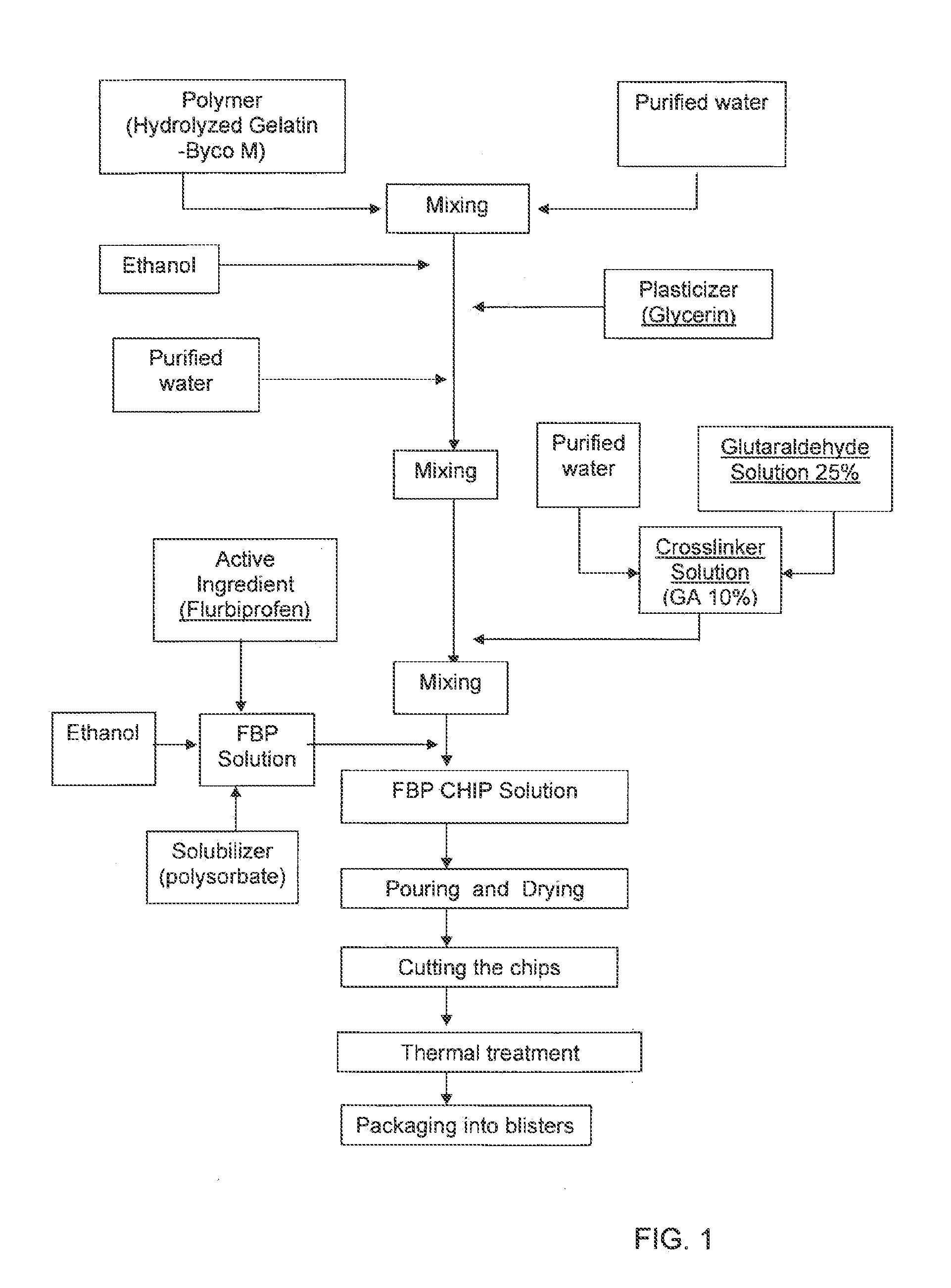Local therapeutic release device
a local release and composition technology, applied in the field of local therapeutic release compositions, can solve the problems of loss of affected teeth, ineffective antimicrobial agents provided to the oral cavity, and often more refractory periodontal disease treatment, etc., to achieve excellent size uniformity, convenient preparation, and regular shape
- Summary
- Abstract
- Description
- Claims
- Application Information
AI Technical Summary
Benefits of technology
Problems solved by technology
Method used
Image
Examples
example 1
[0070]Table 1 shows the composition of granulates prepared according to the following procedure:[0071]Flurbiprofen (FBP) and Eudragit RS were granulated with 10% BycoM aqueous solution;[0072]The granulates were dried.
TABLE 1Composition of the granulatesFormulation No.59-159-259-3IngredientWeight (g)Flurbiprofen7.55.02.5Eudragit RS2.55.07.5*Granulation solution3.53.53.5*10% w / w BycoM aqueous solution
example 2
[0073]Table 2 shows the composition of granulates prepared according to the following procedure:[0074]FBP and Ethyl cellulose were granulated with 10% Byco M aqueous solution;[0075]The granulates were dried.
TABLE 2composition of the granulatesFormulation No60-160-260-3IngredientWeight (g)Flurbiprofen7.55.02.5Ethyl cellulose2.55.07.5*Granulation solution3.53.53.5*10% w / w Byco M in aqueous solution
example 3
[0076]Table 3 shows the composition of granulates prepared according to the following procedure:[0077]FBP, Ethyl cellulose and Byco M were granulated with ethanol;[0078]The granulates were dried.
TABLE 3composition of the granulatesFormulation No.76-176-276-3IngredientWeight (g)Flurbiprofen4.04.04.0Ethyl cellulose4.04.06.0Byco M2.04.0—*Granulation solution5.05.05.0*Ethanol
PUM
| Property | Measurement | Unit |
|---|---|---|
| thickness | aaaaa | aaaaa |
| width | aaaaa | aaaaa |
| length | aaaaa | aaaaa |
Abstract
Description
Claims
Application Information
 Login to View More
Login to View More - Generate Ideas
- Intellectual Property
- Life Sciences
- Materials
- Tech Scout
- Unparalleled Data Quality
- Higher Quality Content
- 60% Fewer Hallucinations
Browse by: Latest US Patents, China's latest patents, Technical Efficacy Thesaurus, Application Domain, Technology Topic, Popular Technical Reports.
© 2025 PatSnap. All rights reserved.Legal|Privacy policy|Modern Slavery Act Transparency Statement|Sitemap|About US| Contact US: help@patsnap.com



